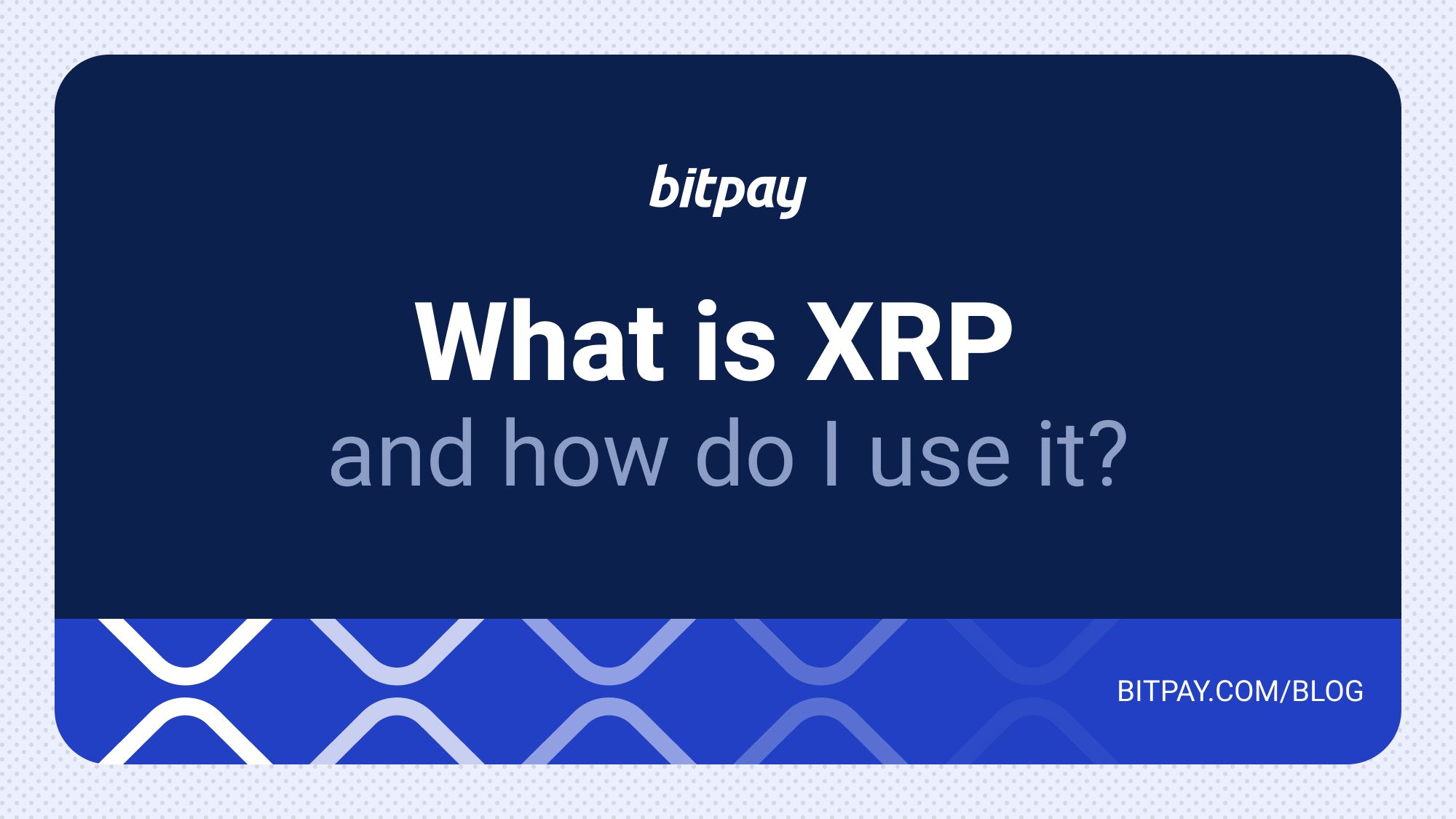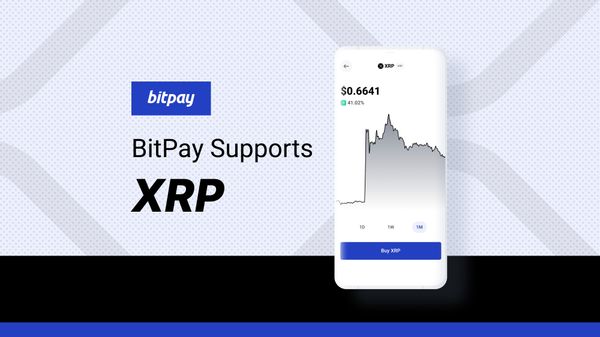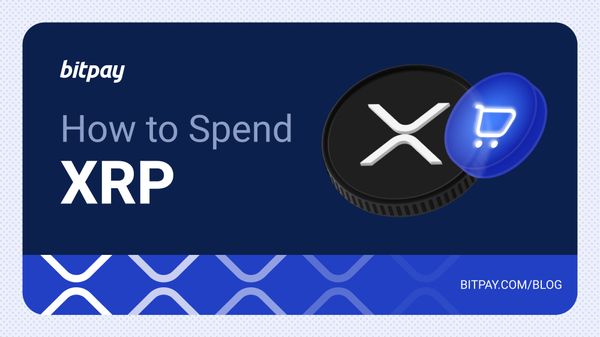Whether you are a seasoned crypto enthusiast or new to the digital asset scene, you may have heard of XRP from Ripple. Recently, BitPay released worldwide support for XRP, allowing BitPay users across the world to buy, store, swap and spend XRP across all BitPay solutions. This article delves into the basics of XRP, what XRP and Ripple are, its recent legal entanglement and how you can use XRP to live on crypto.
What is XRP?
XRP is a cryptocurrency created by Ripple Labs. Started in 2014, XRP grew from Ripple’s first decentralized digital currency, RipplePay. What makes XRP stand out from other cryptocurrencies is its low costs. XRP's main goal is to facilitate fast and cost-effective cross-border transactions, making it an efficient option for spending and using cryptocurrency in everyday life.
XRP vs. Ripple
Despite being used interchangeably, XRP and Ripple are not the same. Simply put, XRP is the cryptocurrency, and Ripple is the company that created the payment settlement system and currency exchange network. While Ripple aims to revolutionize the global financial system through its various products, XRP is one of the cryptocurrencies designed to enable efficient cross-border transactions.
XRP Ledger
The XRP Ledger (XRPL) is the underlying technology that supports XRP. It is an open-source blockchain system that validates and records all XRP transactions. Due to its unique consensus algorithm, the XRP Ledger can settle transactions in just a few seconds, making it one of the fastest blockchain networks available. XRPL is seen as a viable and efficient alternative to traditional Society for Worldwide Interbank Financial Telecommunications (SWIFT) because it bridges between institutions and can settle transactions in seconds in local currencies. SWIFT does not clear or settle transactions which can cause payment delays across borders.
How does XRP work?
XRP differs significantly from other cryptocurrencies in that it doesn’t use proof-of-work or proof-of-stake consensus mechanisms to validate transactions. Instead, it utilizes what’s known as a federated consensus algorithm, which relies on trusted members of the XRP community for validation. These are typically banks or other large financial institutions.
Whenever an XRP transaction request is made, Ripple Network validators consult the XRP ledger and vote on whether a transaction is valid. If 80% or more of the validators say it is, the transaction is added to the Ripple ledger. This enables the Ripple Network to process as many as 1,500 transactions per second, compared to 4-5 for Bitcoin and 10-15 for Ethereum.
Ripple’s stated goal is to enable money to move as easily as information, looking to provide what it calls “an internet of value.” The network of payment providers, banks and other financial institutions utilizing solutions developed by Ripple is known as RippleNet. RippleNet facilitates the communication and transactions between these institutions to simplify how money is sent around the world.
Legal Entanglements
XRP has faced some legal challenges, primarily related to its classification as a security by regulatory authorities. On July 13th, 2023, a federal U.S. judge determined that XRP sales on public crypto exchanges were not offers of securities (stocks) under the law, leading to a rally in XRP price and the asset being listed across several popular exchanges. It's important to note that the situation is evolving, and various countries have different perspectives on XRP's legal status.
How to Use XRP
As a BitPay user, you have the ability to utilize XRP across BitPay’s collection of cryptocurrency payment and management solutions.
Pay with XRP
A growing number of businesses across the world accept direct payments in XRP. Now even easier than ever, you can pay with XRP straight from your wallet with some of the most notable retailers and brands online and in-person.
Send and Receive XRP
If you want to make peer-to-peer (P2P) payment, you can send XRP directly to another wallet address with the BitPay Wallet quickly and easily. It only takes a few steps.
- Open the BitPay Wallet app
- Click on your XRP wallet
- Click “Send”
- Enter the wallet address you want to send to (or scan the receiver's QR code)
- Enter the amount of XRP you want to send
- Confirm payment details and slide to send
Buy and hold as an Investment
BitPay partners with trusted, secure crypto marketplaces around the globe so you can have multiple options to quickly and easily buy XRP, plus 60+ other coins. BitPay’s marketplace approach to crypto purchases ensures you always get the best rate on your XRP buys.
After buying XRP, store and manage your assets with the BitPay Wallet. Our self-custody wallet is a secure, convenient way to store and utilize your assets across chains and wallets.
Take control of your crypto
Swapping XRP
Swapping XRP is the process of instantly trading XRP for another currency (or vice versa) without the need for a crypto-to-fiat exchange, making it a more efficient and less costly method compared to the traditional way of selling one token for fiat and then purchasing another. Read our guide to crypto swaps to get started.
Bonus: Buy gift cards with XRP
Purchase gift cards for brands such as Uber, Home Depot, Hotels.com, and more using XRP or your favorite cryptocurrency. Buy them directly through the BitPay app or extension and use the gift cards right away. Learn more about buying gift cards with crypto.
XRP is an intriguing cryptocurrency that has many practical uses, especially for fast and cost-effective cross-border transactions. Despite facing legal challenges, its potential to transform the global financial system is significant. XRP’s journey serves as a lesson for the crypto space of why it's important to keep an eye on regulatory developments and consider how different assets align with your cryptocurrency preferences.


